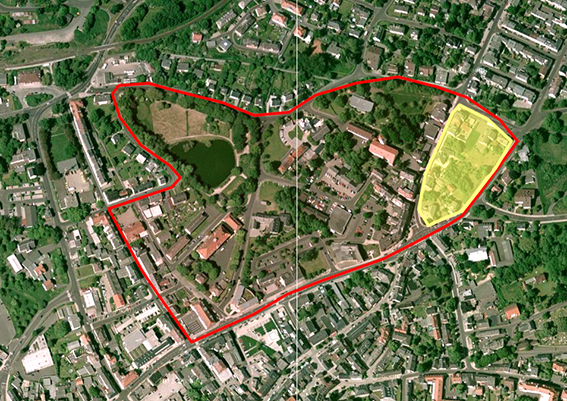Catalogue for Dwelling on the Time
Author(s)
Gutiérrez-delafuente – Julio de la Fuente (ES), Natalia Gutiérrez (ES)
TallerDe2 – Alvaro Martín Fidalgo (ES), Arantza Ozaeta (ES)
Client(s)
City of Selb
Competition team
Julio de la Fuente (ES)
Natalia Gutiérrez (ES)
Alvaro Martín Fidalgo (ES)
Arantza Ozaeta (ES)
architects
Europan 9 Selb
winner
2007
By concentration of residential density on the perimeter of blocks, the project creates continuous urban fronts and inner units of social interaction. These units of urban development (Town Hall) are defined by a specific combination of activities, housing and infrastructure. Connectivity is its potential.
The team displays a catalogue of programmatic stripes, which work as “prosthesis”: they adapt the existing houses to new necessities and, by addition of certain elements, they organize a new urban unit. Intervention is organized in 3 steps: renovation and extension of existing houses; creation of new urban fabric; inclusion of public programmatic stripes. Game is opened and rules established allowing new model of city in the time.
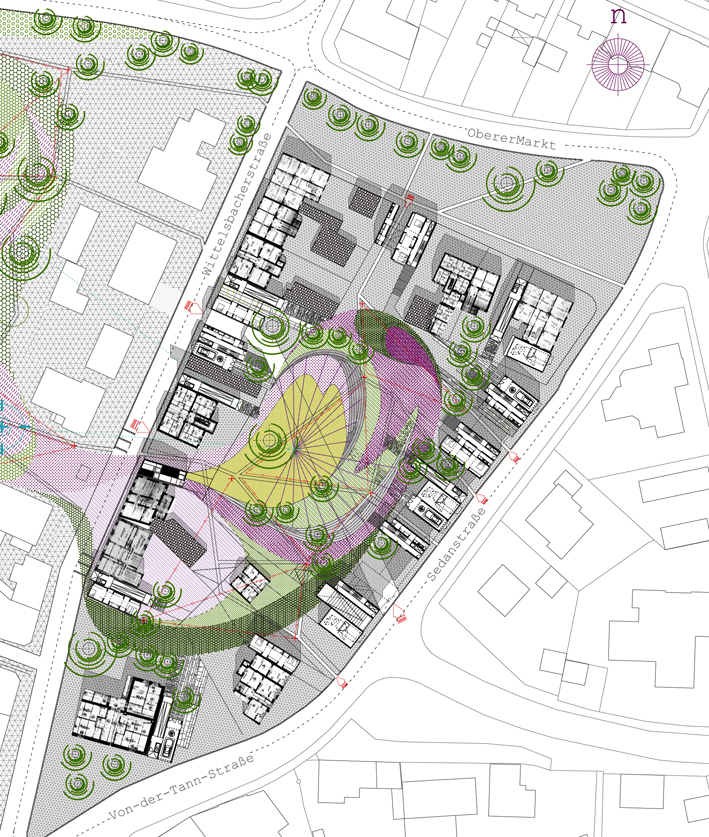
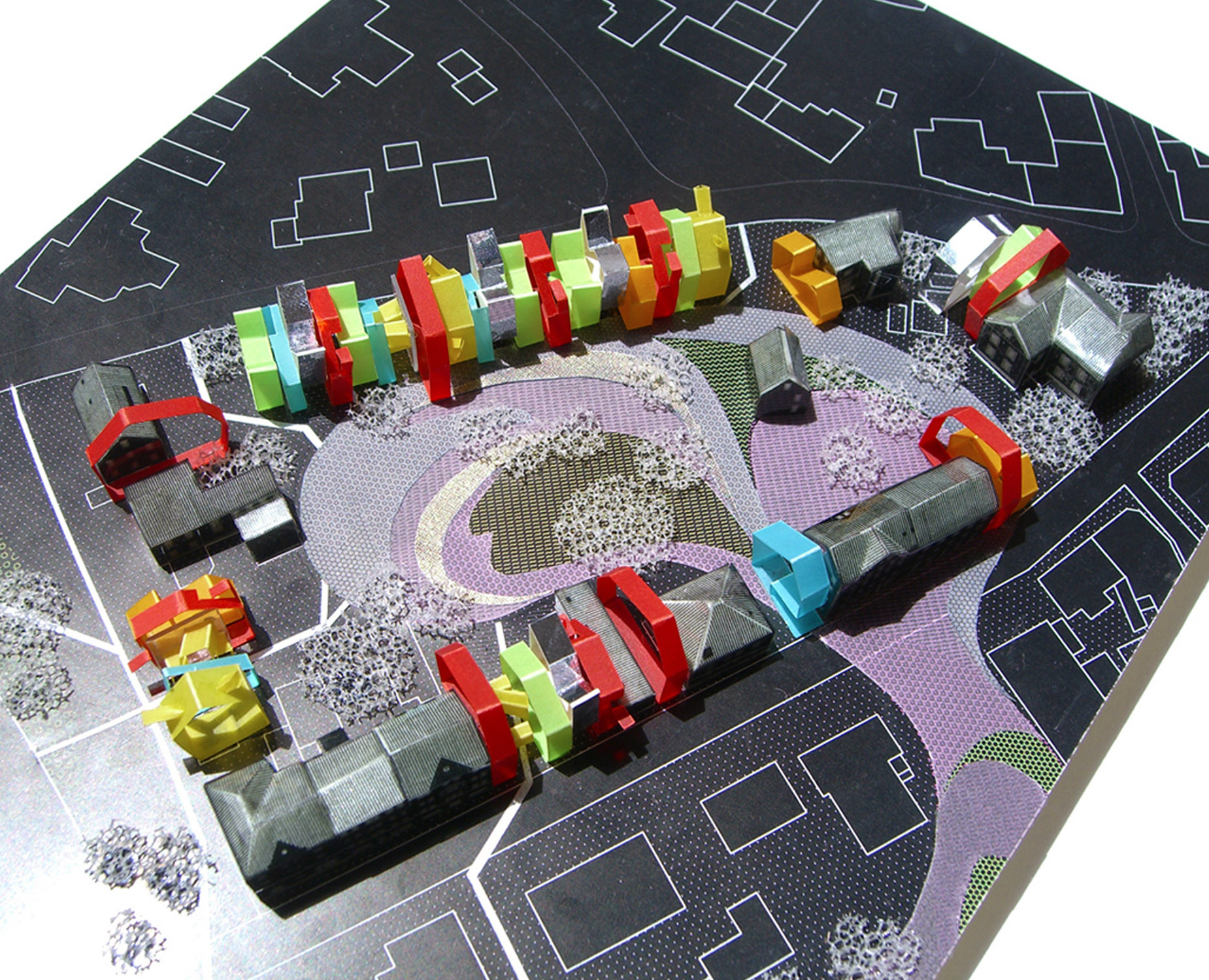
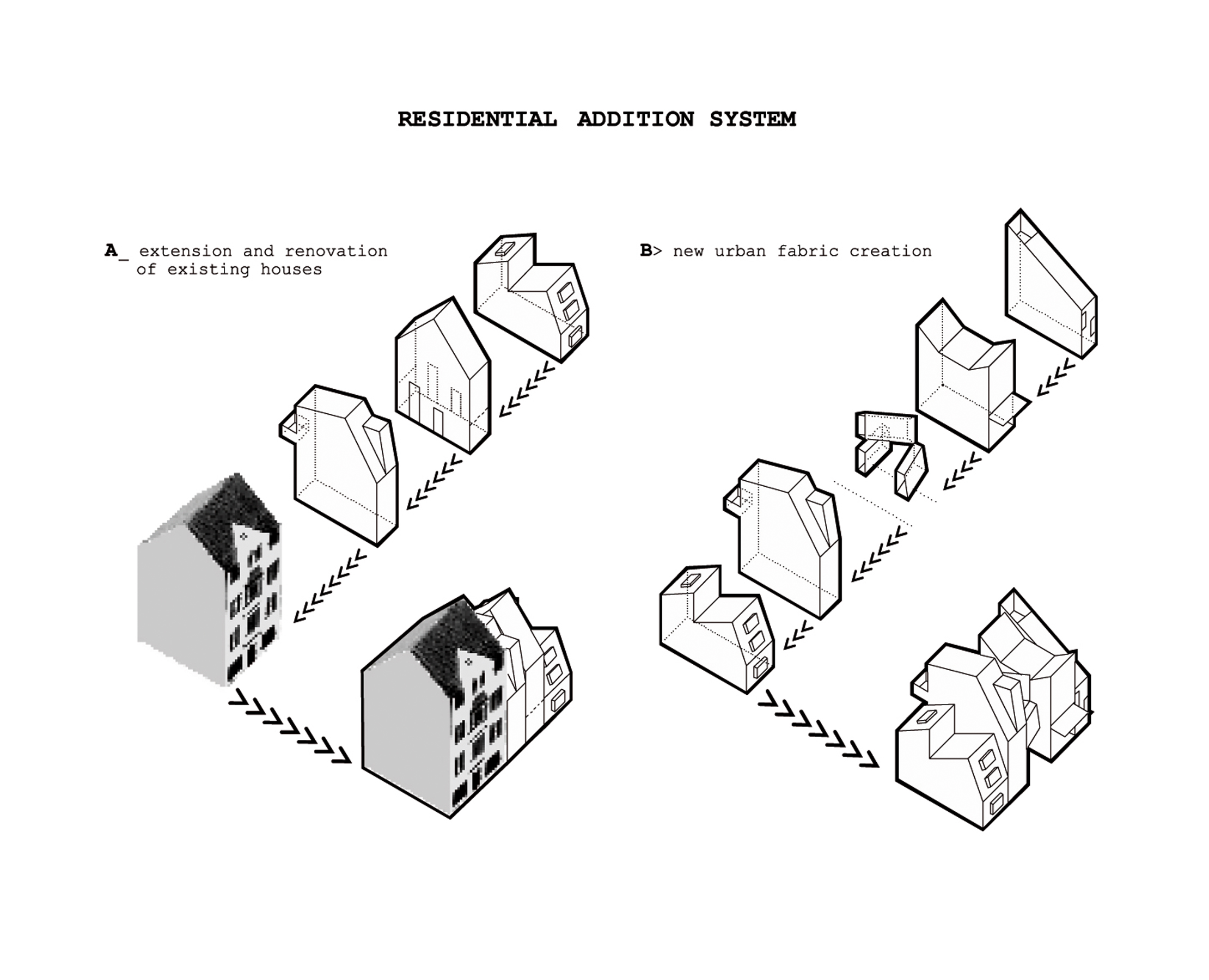

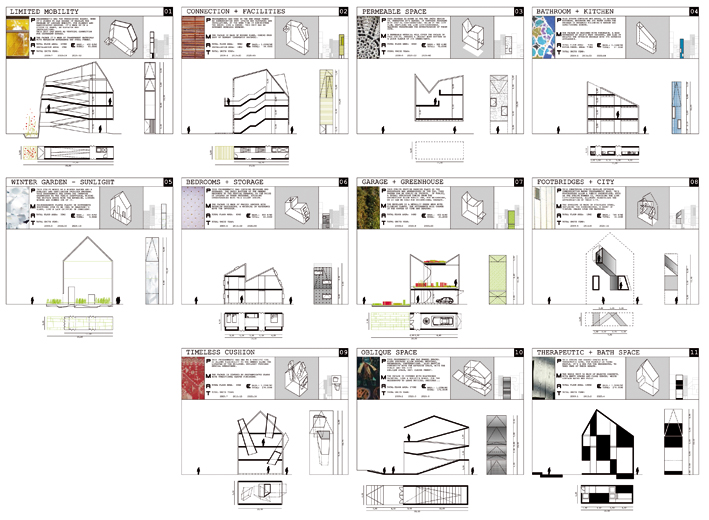

2008-2010
The competition project proposed a concept of Healing Acupuncture as a solution to the lack of resources for the elderly people in the city of Selb. The team focused on improving the life of this social group by renovating private structures and public infrastructure, by offering new services and by redefining social spaces.
During the implementation process, and after several meetings with the different actors, it was decided to reorient this urban strategy: ‘prevention rather than cure’, not anymore oriented towards the elderly people but to the younger generations that can settle in the city. Thus, the teams proposed Preventive Acupuncture as a solution to reactivate this shrinking city. In order to attract young people from other cities and provide new facilities to local youth preventing them from leaving Selb, the architects developed five projects: Daycare Centre (for infants and children), Soccer Arena, Youth Hostel and Youth Club (for teenagers) and Experimental Public Housing (for young families).
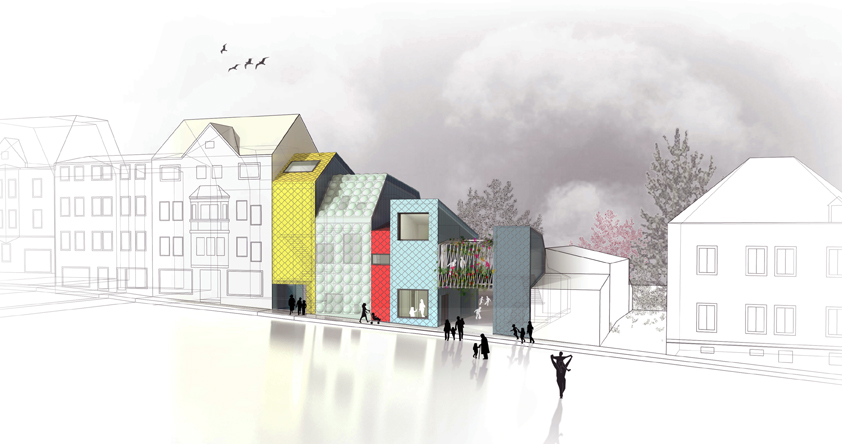
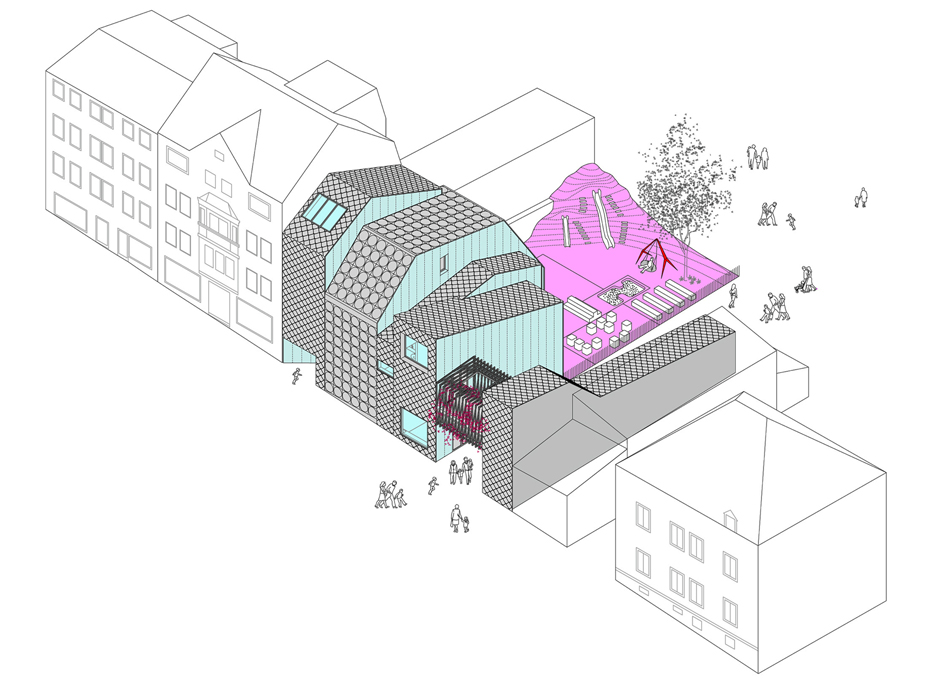
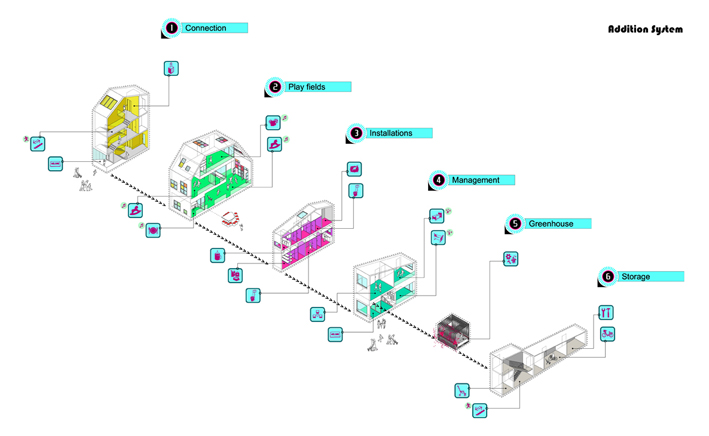
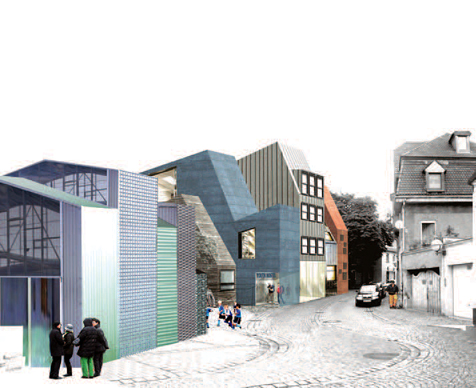
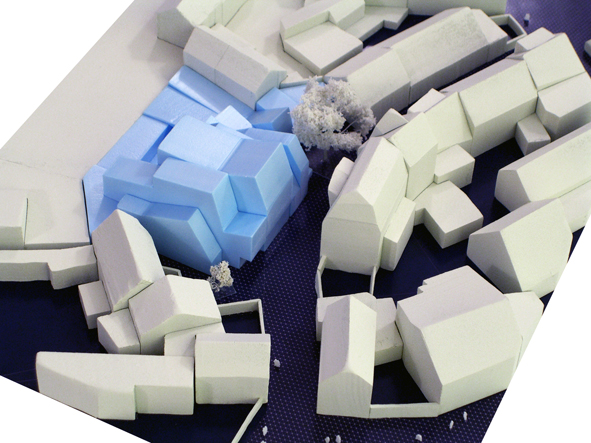
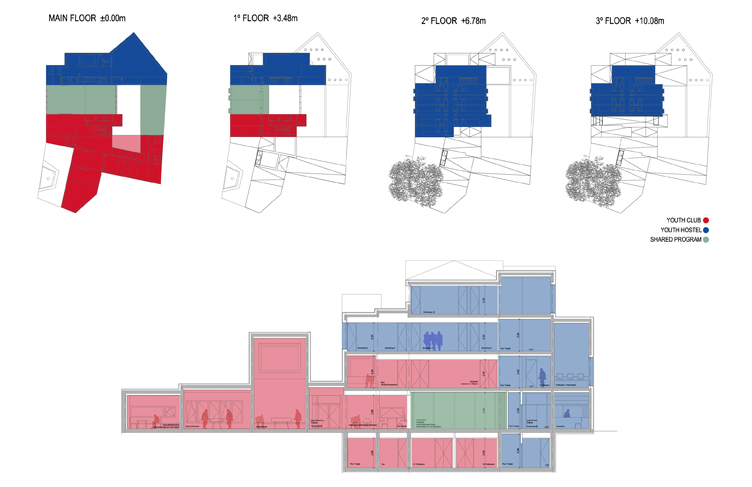
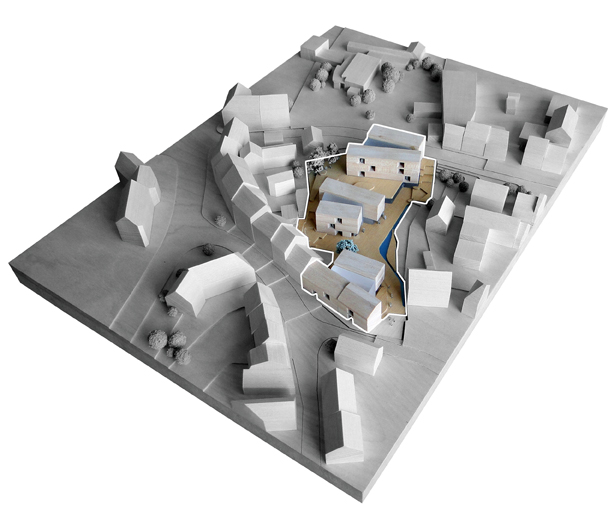
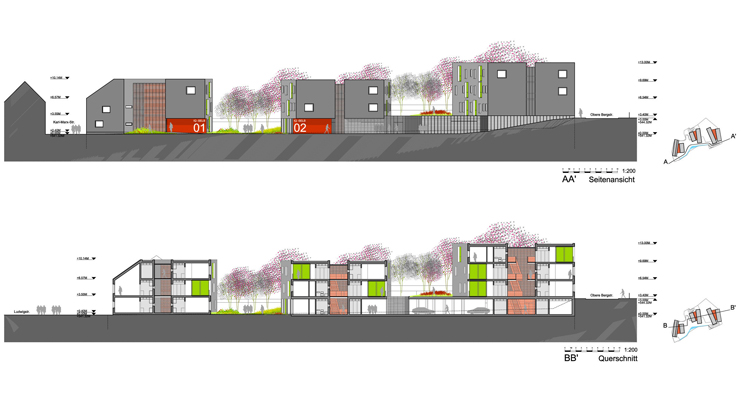
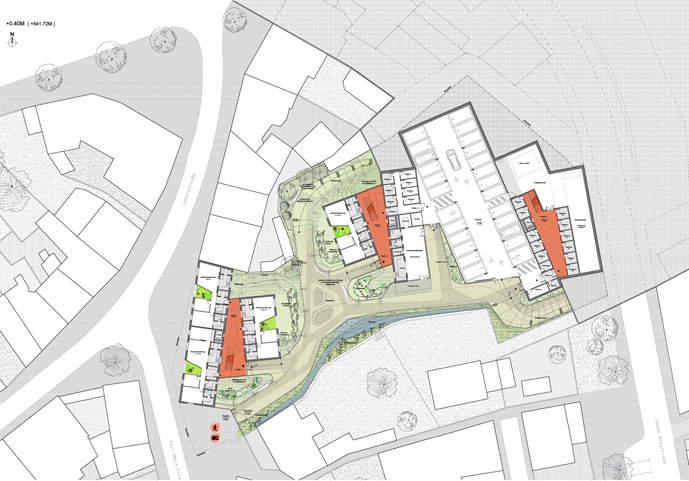
2011-2016
The Daycare centre completes the last void of a heterogeneous urban facade. It is placed on a sloping ground floor and it connects a four-store house with a one-floor storage, as well as it opens the inner garden of the block to the city. Flexibility of strip-system allows organising programmes in specialized bands: vertical connection, playgrounds, installations, management, greenhouse and storage.
The youth Hostel and Youth club are placed in the inner city between two small public parks. By identifying each main access with each park, the architects integrate them in the project: they extend them towards an inner courtyard, which is a semi-public space that establishes a fluent connection between the building and urban space. Flexibility of strip-system allows organising programmes in bands with varied scales: public and private uses, installations, vertical connection… The two buildings (hostel and club) have independent entrances that provide the possibility of self-management. Connections are possible through a bridge-strip, with shared multipurpose uses and interchanging boundaries.
The housing programme is composed of 25 apartments for young families with parking lot and cellars, as well as a communal room and a biomass power plant ,which will provide energy to the district at the heart of the city where the Youth Hostel and Club are placed. This last project reinforces the proposal of preventive acupuncture as solution to reactivate the shrinking city of Selb. It also reinforce the reconnection of certain parts of the city that have been isolated for years.
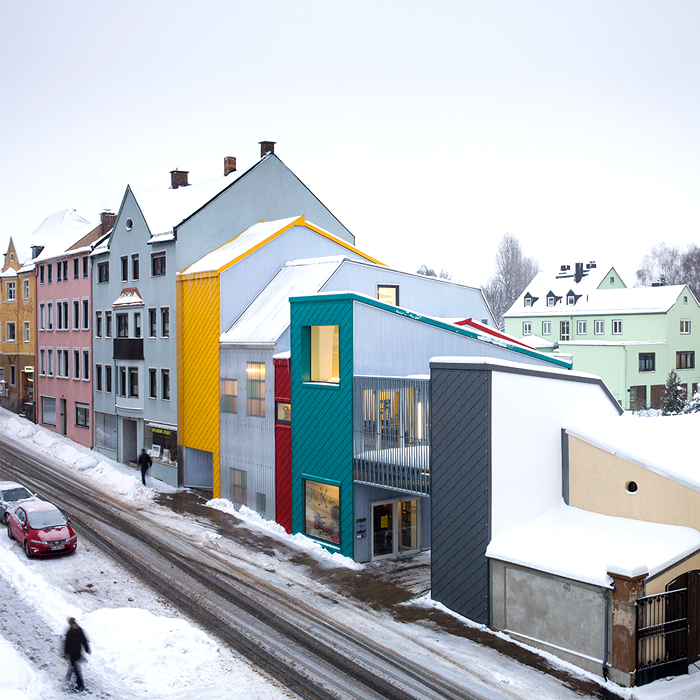
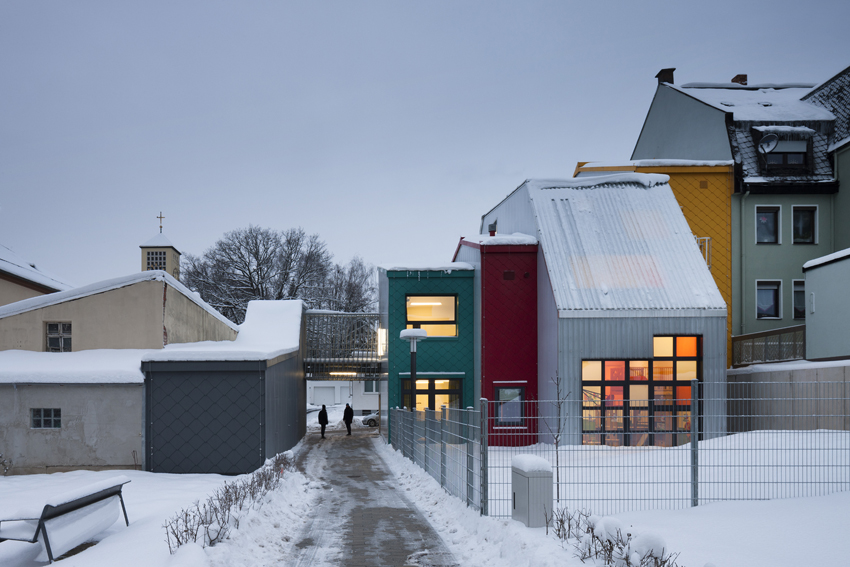
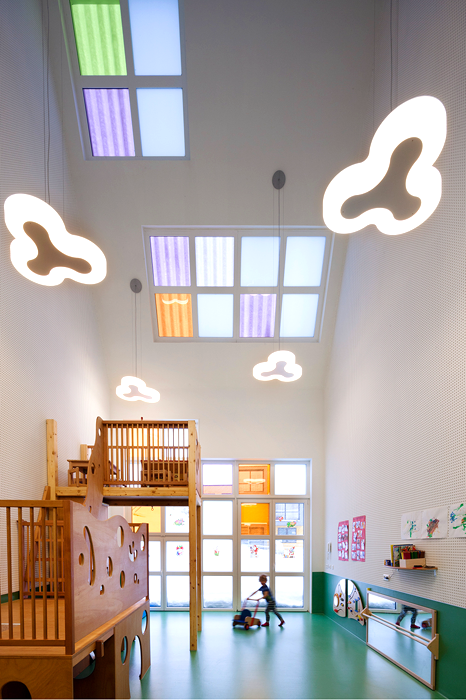
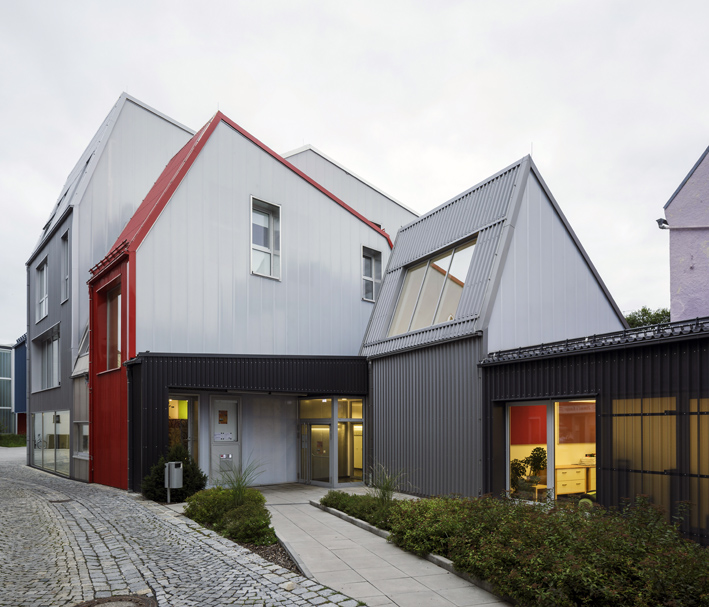
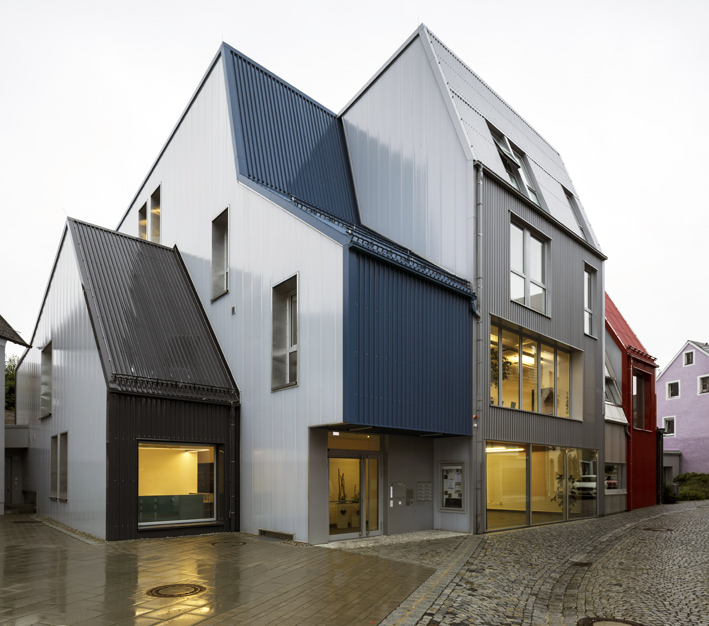
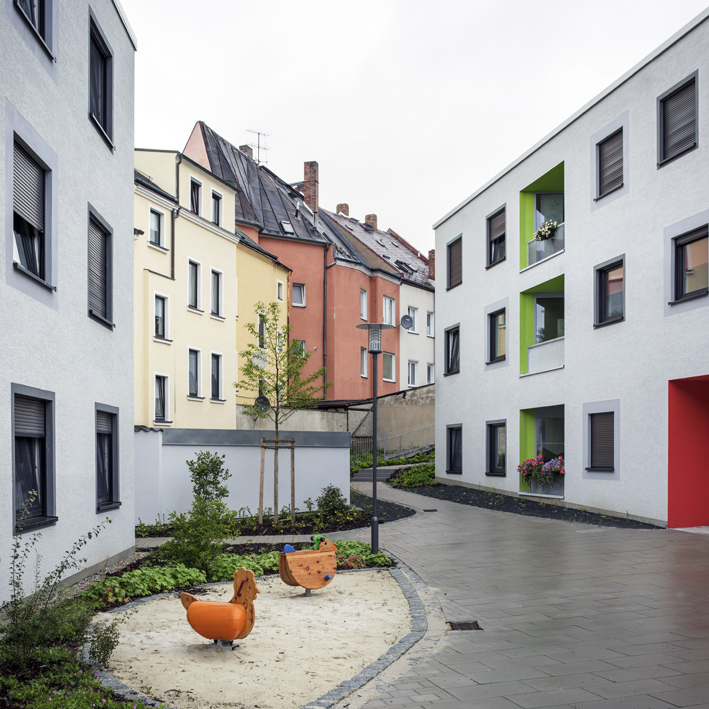
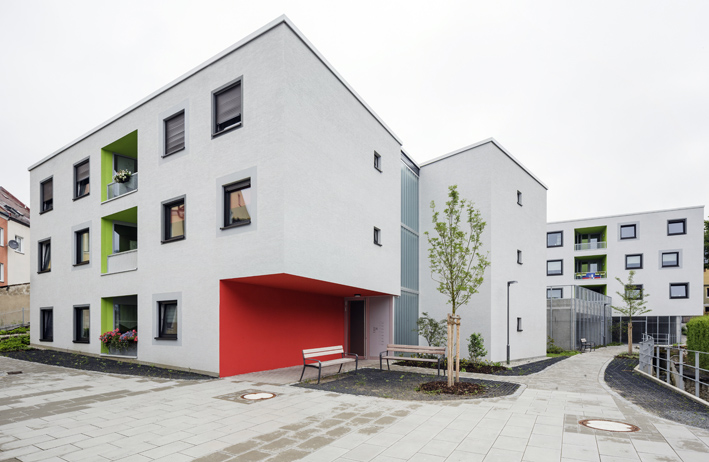
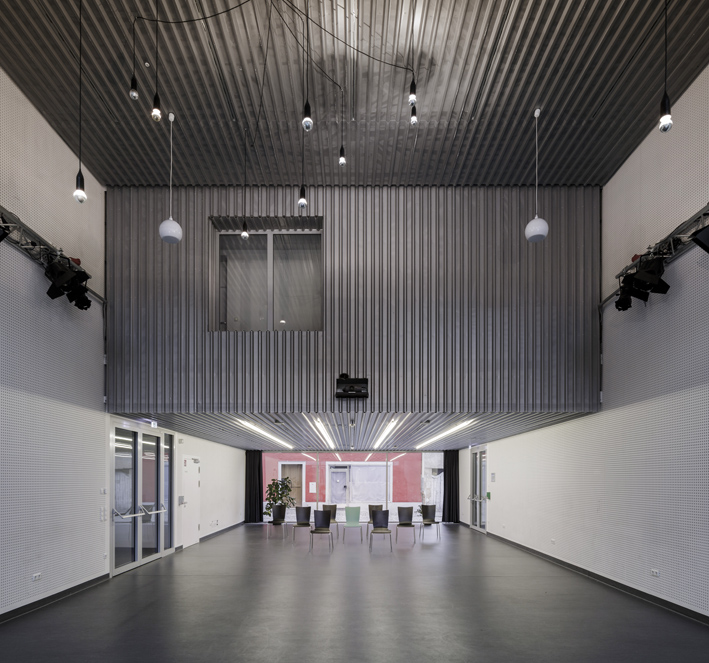
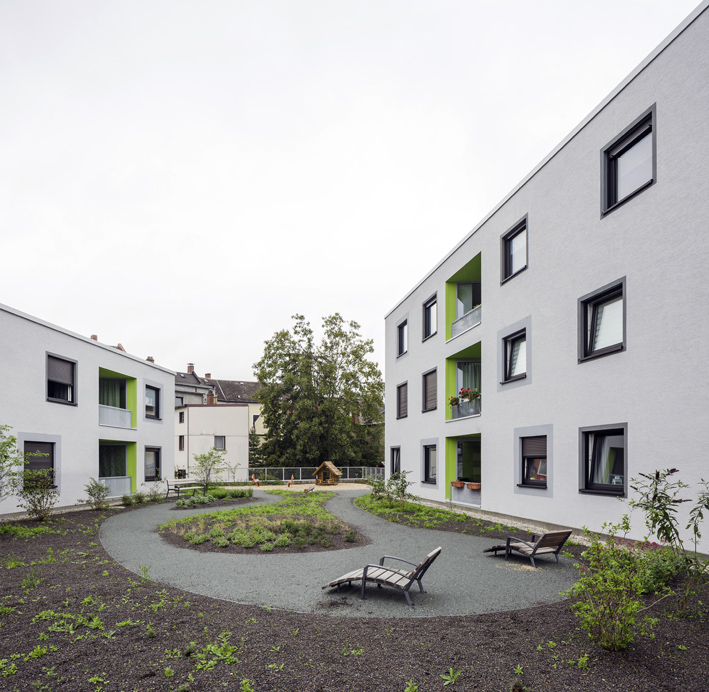
This project is connected to the following themes
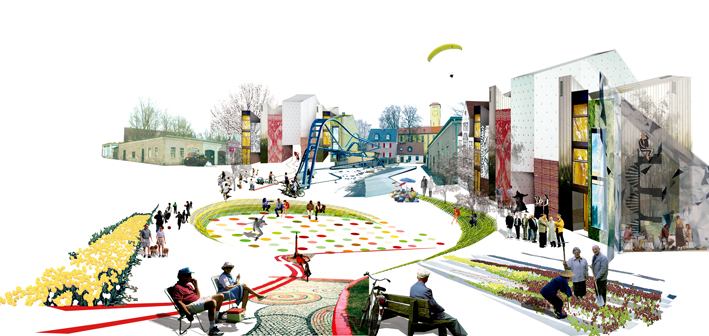
Shared spaces - A Frame for social life
The urban fabric is regenerated by introducing extensions between the existing dwellings and by enlivening the inner blocks.
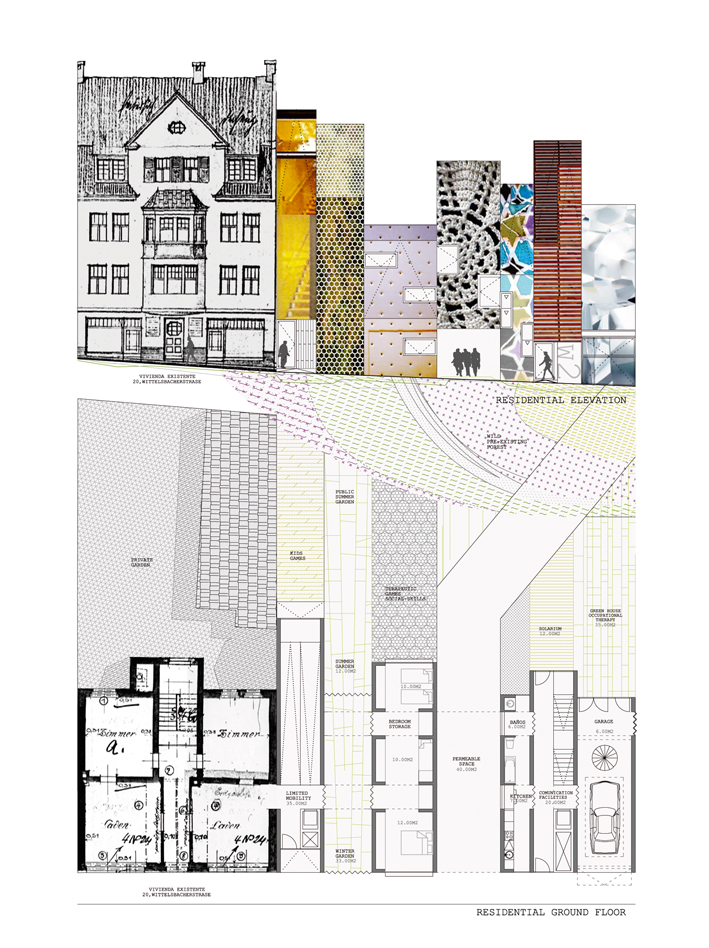
Housing - Typology
A subtle and sensitive variation in typologies punctuates the streetside facades and animates the town, while providing a diversity of spaces appropriate to the different programmes underway. Meanwhile, the interior of the proposed block and the activities housed within the building, work together actively to tighten the social fabric of the area.
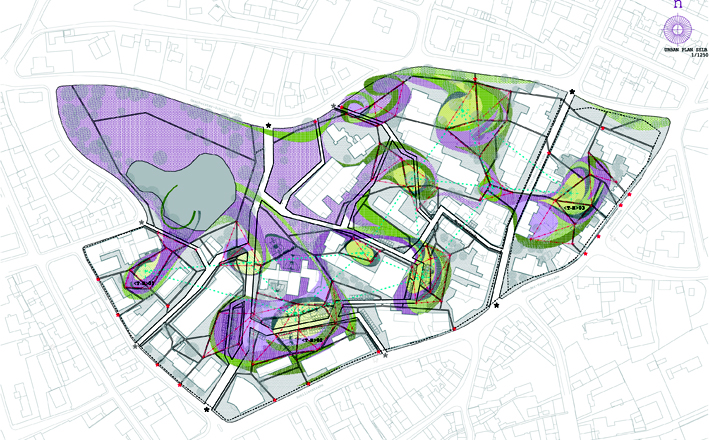
Nature - Working with
The urban form and design of the public spaces are composed from the site’s 3 natural elements: rainwater, sunshine and the prevailing winds.
